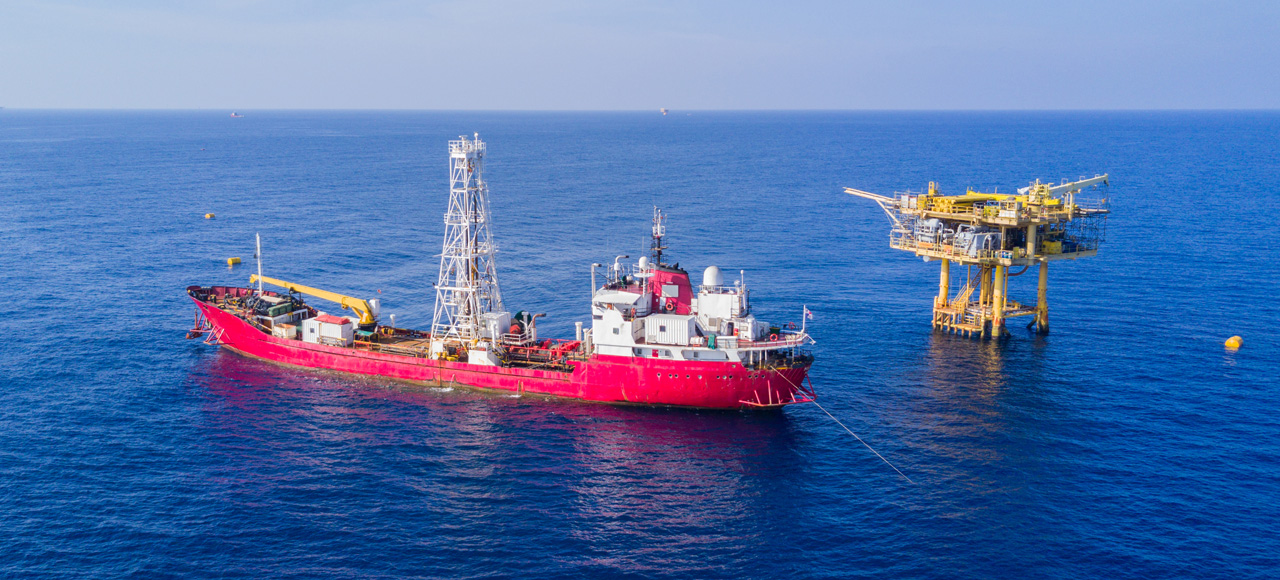
Updated Study Examines the Impact of Halting New Lease Sales in the Gulf of Mexico and Low Oil Demands
(Updated October 2022 study revises prior study published in May 2022)
OnLocation was asked by the Natural Resources Defense Council (NRDC) to examine the impact of reduced oil demands and stopping new offshore oil and gas leasing in the Gulf of Mexico (GOM) after January 2021 (i.e., no Lease Sale 257), while continuing all leases prior to January 2021. The analysis assumed that the remainder of onshore production continued to be developed per “current laws and regulations.” OnLocation includes Corporate Average Fuel Economy (CAFE) standard and Zero Emission Vehicle (ZEV) updates in the transportation sector to represent lower oil demands.
For the analysis, OnLocation created a version of the U.S. Energy Information Administration’s (EIA) Annual Energy Outlook 2022 (AEO2022) National Energy Modeling System, here referred to as “NRDC-NEMS.” The results of the NRDC-NEMS analysis were compared to the AEO2022 Reference case for the years 2021 to 2050 for the following metrics: 1) Production and prices of crude oil and natural gas, 2) Prices of gasoline and diesel, and 3) Emissions of carbon dioxide (CO2) and methane (CH4).
Key highlights from comparing the results of ‘No New leasing’ in GOM with the AEO2022 Reference case are:
- Domestic U.S. production of natural gas starts to decrease in 2024 and is 1% lower in 2050 than projected natural gas production in the AEO2022 Reference case.
- Domestic U.S. production of crude oil starts to decrease in 2024 and is 4.4% lower in 2050 than projected oil production in the AEO2022 Reference case.
- Crude oil and natural gas production from GOM are 54% and 85% lower respectively, in 2050 than in the Reference case.
- Oil and natural gas prices increase slightly by $0.85/barrel and $0.15/million btu by 2050 relative to the Reference case.
- Gasoline and diesel prices increase over time to $3.17/gallon and $3.55/gallon respectively in 2050 in the ‘No new leasing’ scenario, which is 2 cents/gallon higher than those prices in the Reference case in 2050.
- From 2021 through 2050 and relative to the Reference case, the ‘No new leasing’ scenario results in cumulative reductions of 3100 million barrels of domestic oil production and 5 trillion cubic feet of domestic natural gas production. The resultant changes in oil and gas production, distribution, and consumption in the ‘No new leasing’ scenario produce a lower cumulative amount of 390 MMT CO2* and 630 MT CH4* in the U.S. as compared to the Reference case from 2021 to 2050.
Key highlights from comparing the results of ‘No new leasing in GOM & low oil demand’ scenario with the AEO2022 Reference case are:
- In response to more stringent fuel economy standards and ZEV mandates in the transportation sector, the market penetration of electric vehicles (EVs) and electricity generation from natural gas increases. This results in increasing natural gas production starting in 2029. Domestic U.S. production of natural gas is 1.2% higher than the Reference Case in 2050.
- Domestic U.S. production of crude oil starts to decrease in 2024 and is 6.7% lower in 2050 than projected oil production in the AEO2022 Reference case.
- Crude oil and natural gas production from GOM are 54% and 85% lower, respectively, in 2050 than in the Reference case.
- Oil prices decrease by $4/barrel, and natural gas prices increase slightly $0.2/million btu by 2050 relative to the Reference case.
- Gasoline price is 2.6 $/gallon in 2050 and 50 cents/gallon lower than the Reference Case due to higher EV adoption and lower gasoline consumption in the transportation sector.
- Diesel prices increase over time to $3.55/gallon in 2050, which is 2 cents/gallon higher than those prices in the Reference case.
- From 2021 through 2050 and relative to the Reference case, the ‘No new leasing & low oil demand’ scenario results in cumulative reductions of 4,200 million barrels of domestic oil production and a cumulative increase of 4 trillion cubic feet of domestic natural gas production. The resultant changes in oil and gas production, distribution, and consumption in the ‘No new leasing & low oil demand’ scenario produce a lower cumulative amount of 4,800 MMT CO2* and higher cumulative amount of 1,200 MT CH4* in the U.S. as compared to the Reference case from 2021 to 2050.
*CO2 and CH4 emissions from oil/gas exploration and production outside U.S. associated with imported oil and gas are not included in this analysis.
These results are updated from a prior study that was published in May 2022. The primary changes involved updating the results from AEO2021 to AEO2022 assumptions and adding the updated Corporate Average Fuel Economy (CAFE) standard and Zero Emission Vehicles (ZEV) mandates to the transportation demand module.
More detailed information about this study can be found in the presentation slides.

